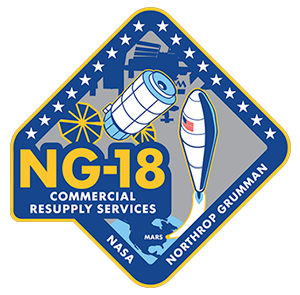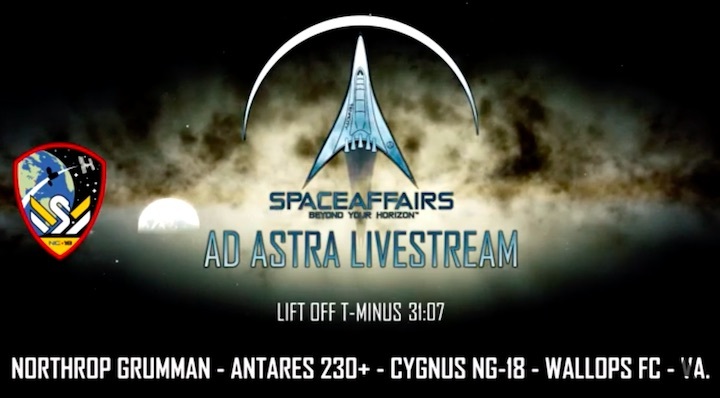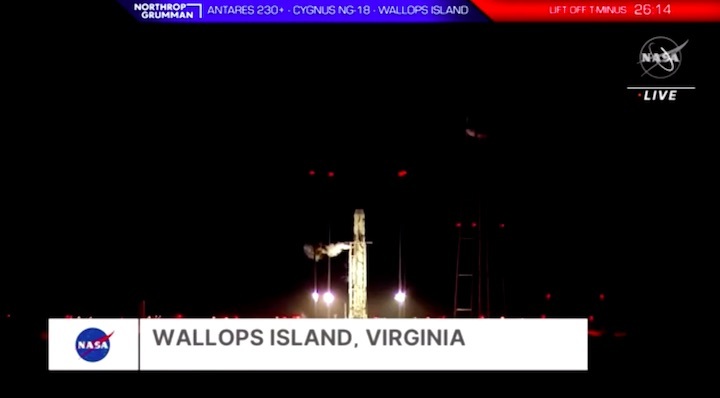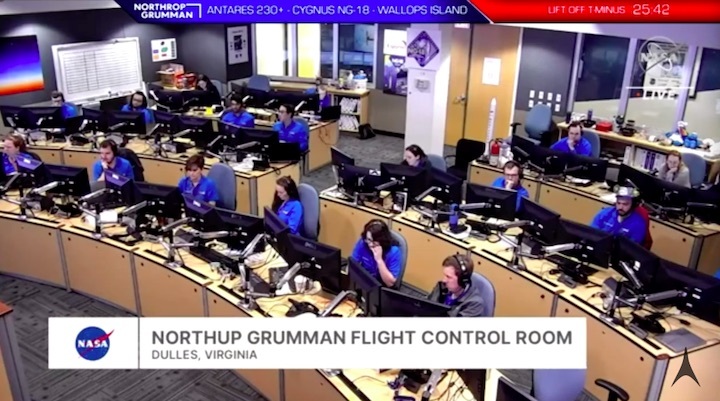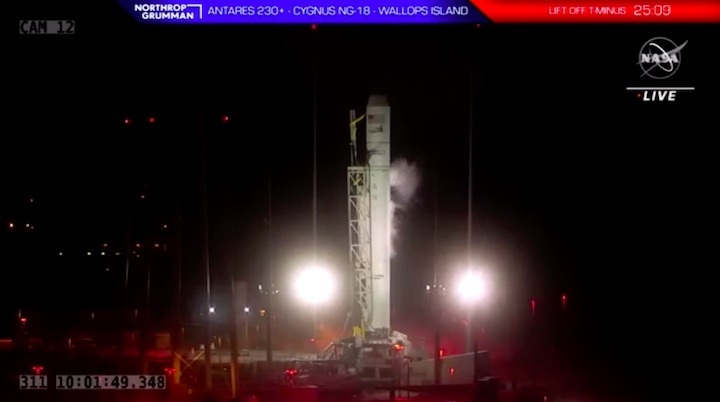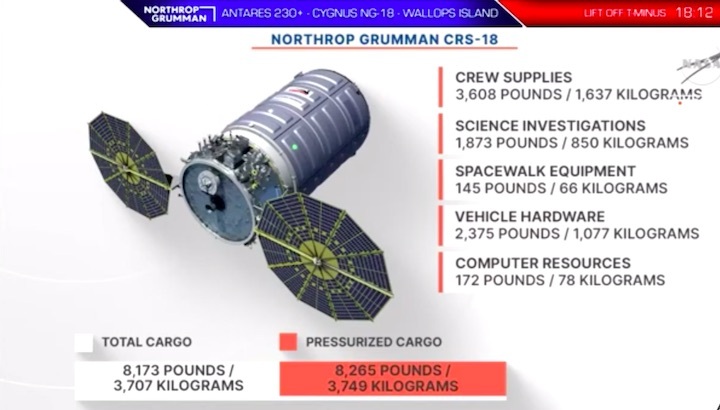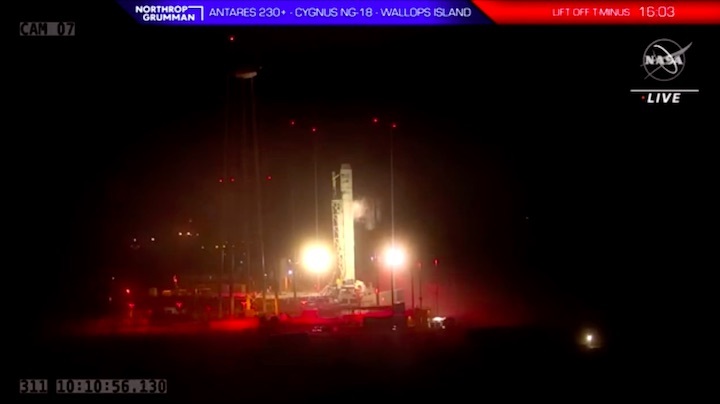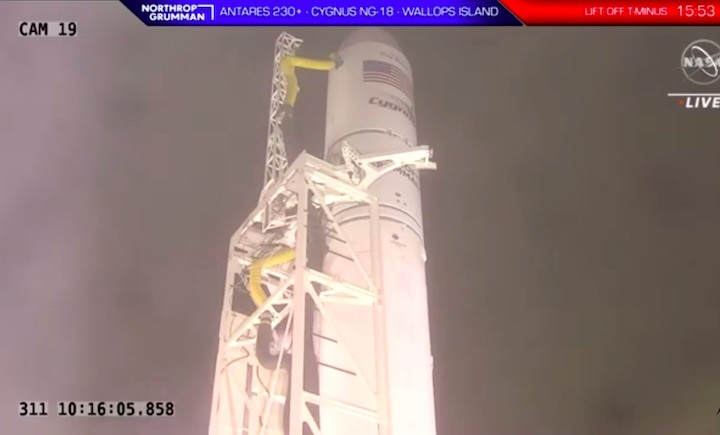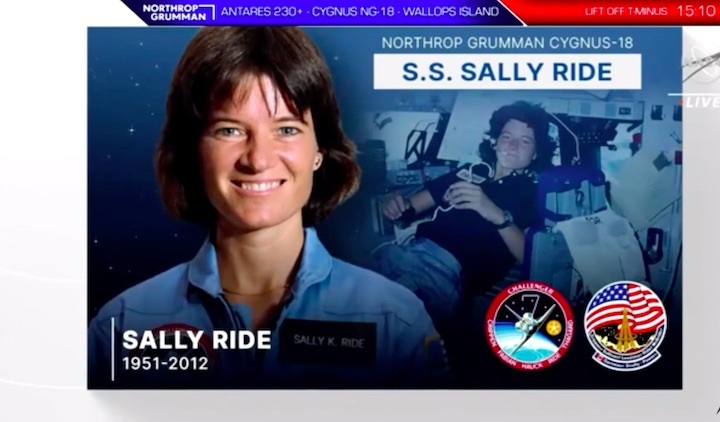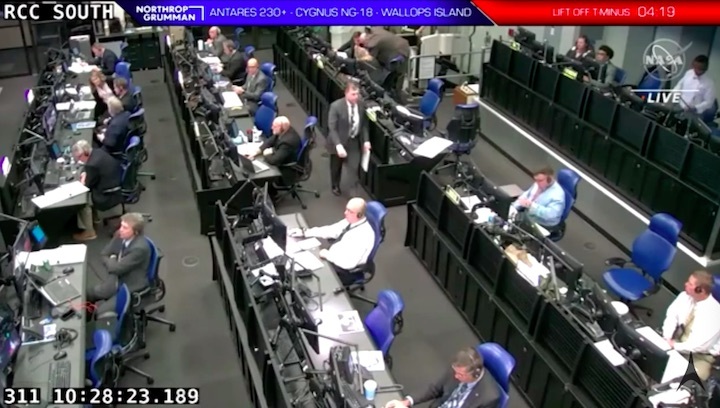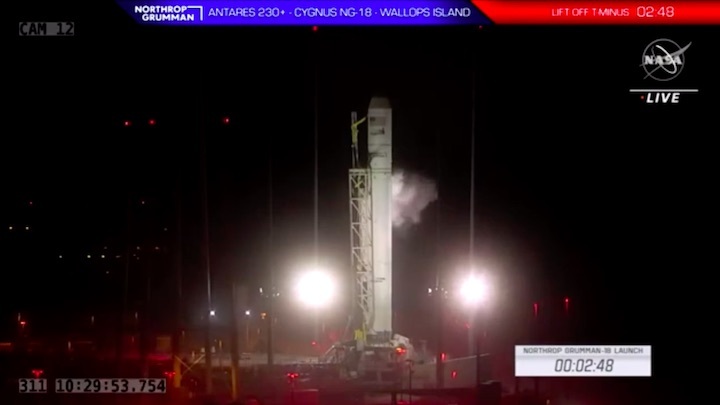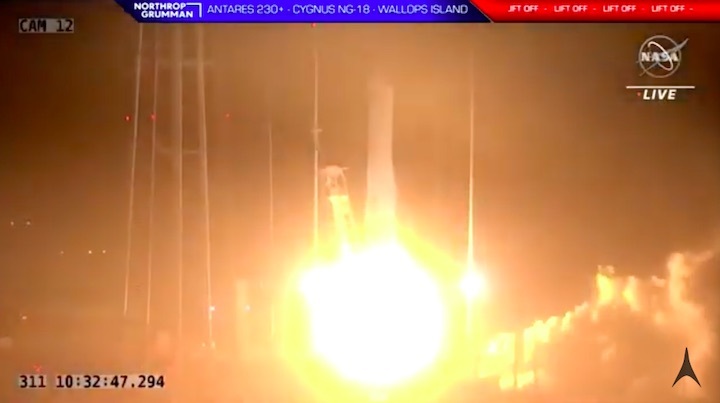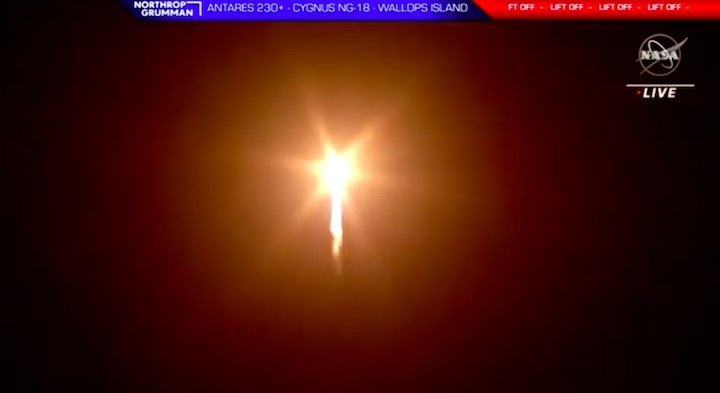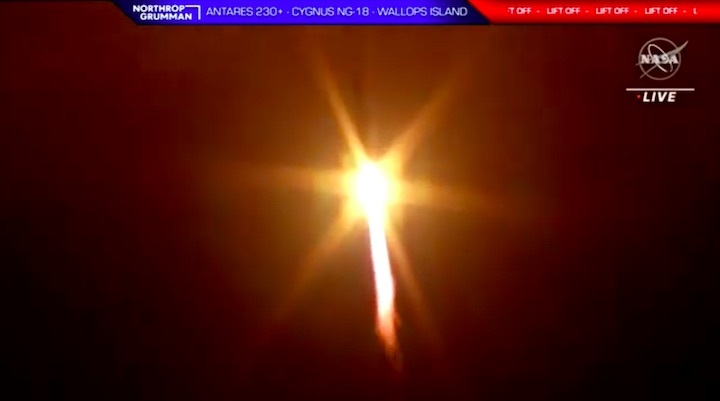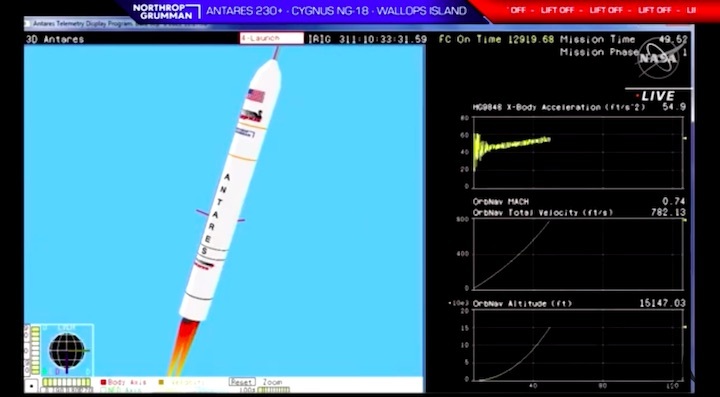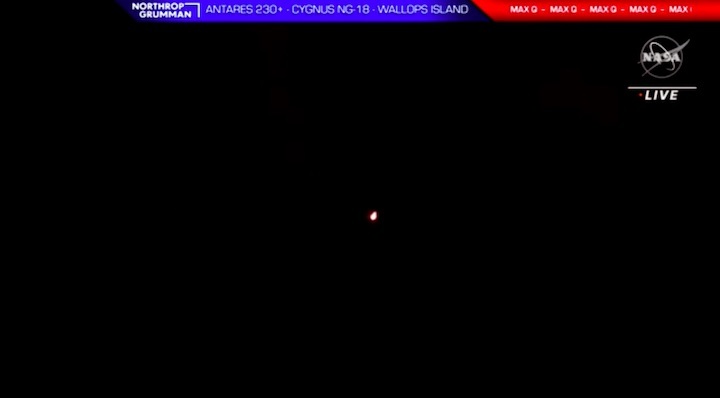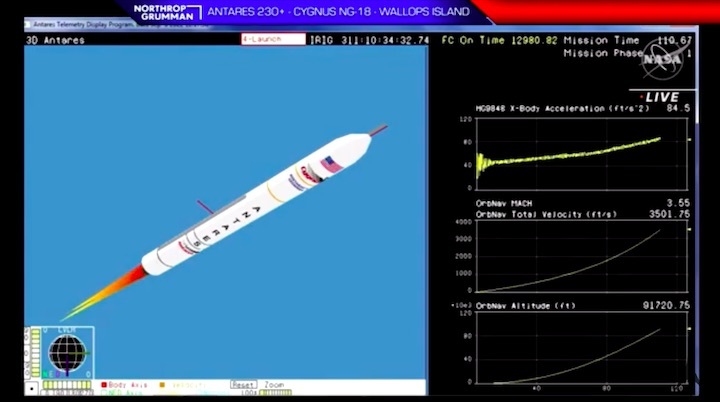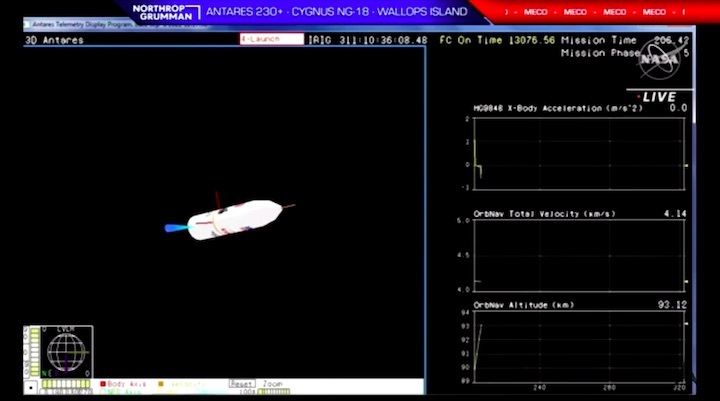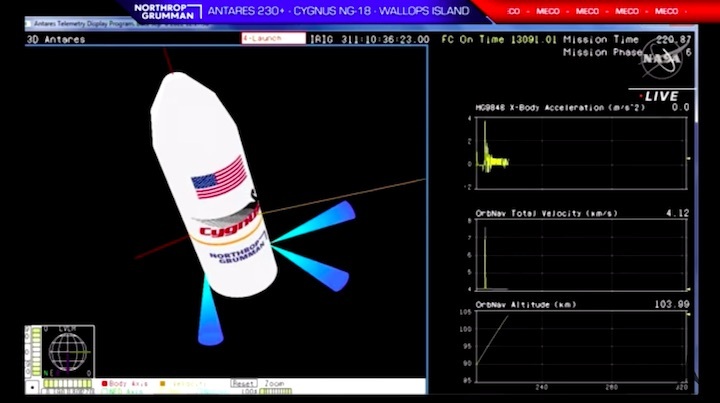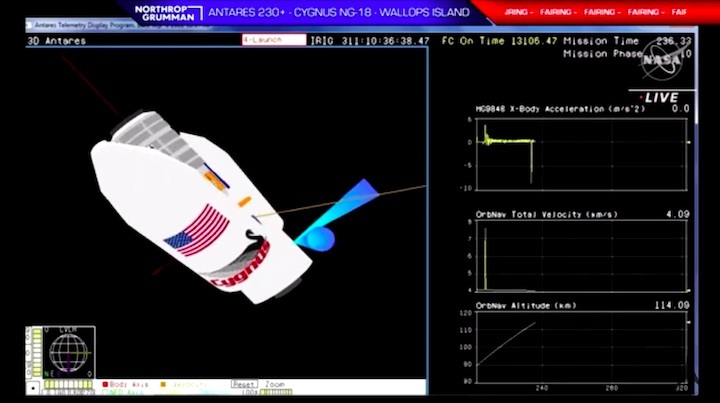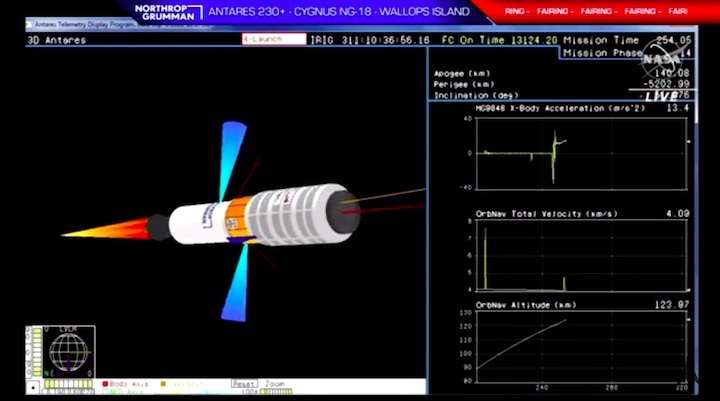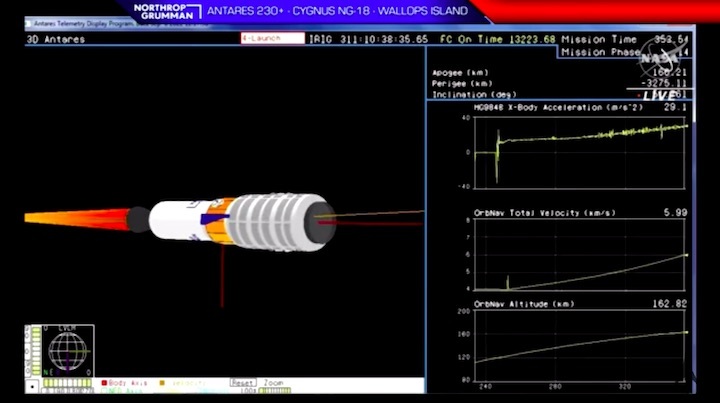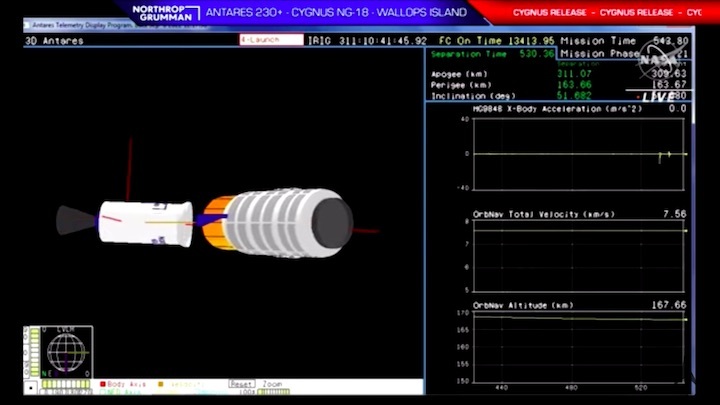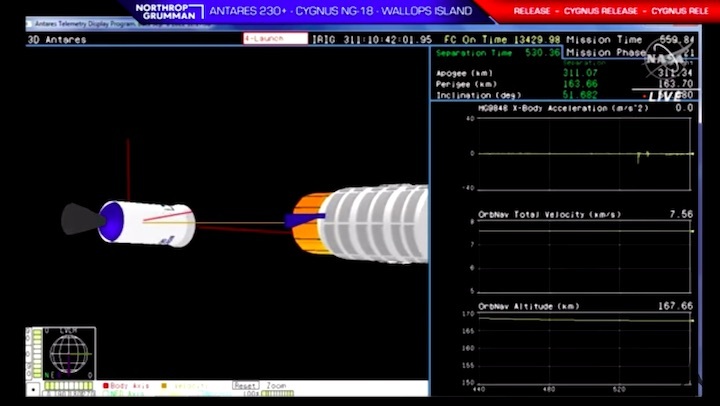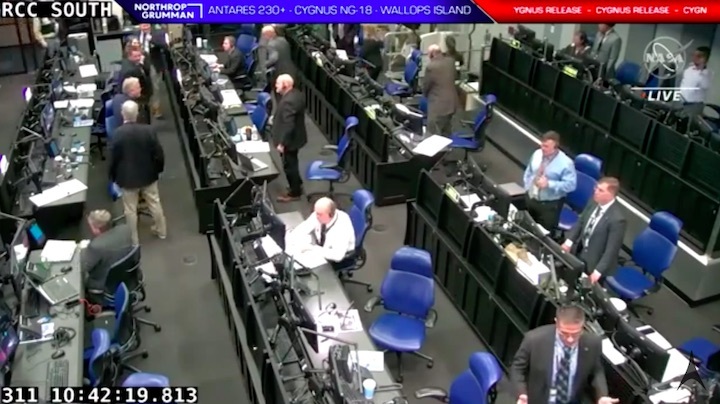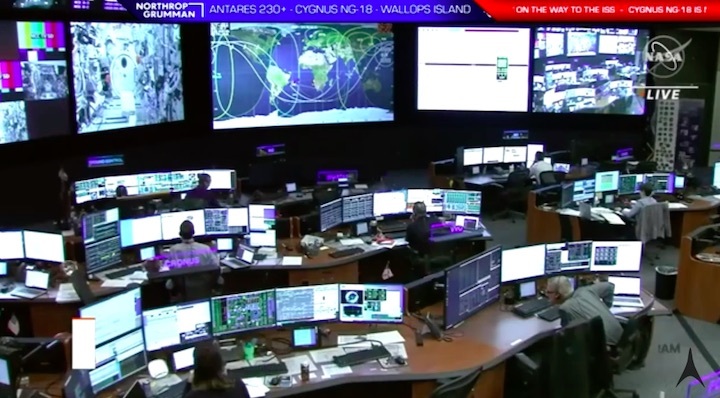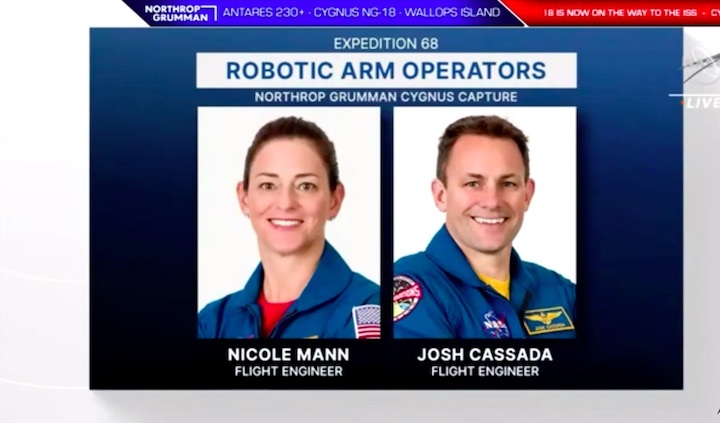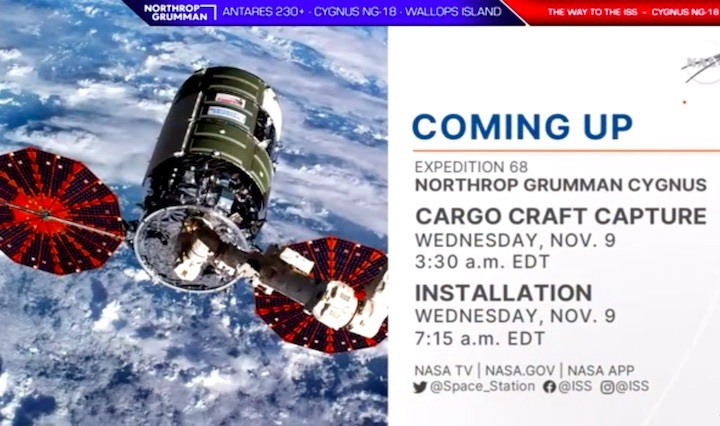6.10.2022
Northrop Grumman names cargo craft for first US woman in space
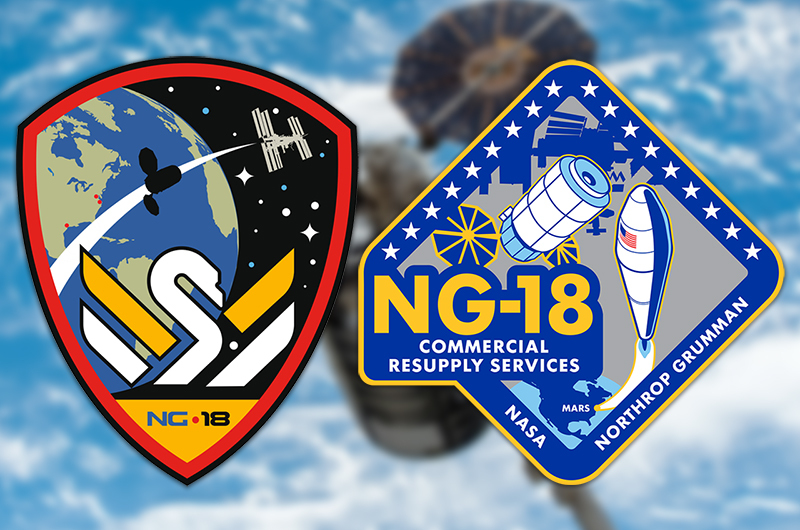
She set sail as a U.S. Navy research vessel, shipped out as postage stamp, entered circulation on the reverse of a coin and stood tall as a monument. Now, America's first woman in space is set to return to Earth orbit as the namesake of a space station-bound cargo capsule.
Northrop Grumman has christened its 19th (NG-18) Cygnus resupply spacecraft the "S.S. Sally Ride."
"Today we recognize and celebrate the contributions of a true pioneer of spaceflight by naming our next Cygnus spacecraft after Dr. Sally Ride," said Kathy Warden, chair, chief executive officer and president of Northrop Grumman, in a video posted to the company's social media channels on Monday (Oct. 3). "She was a steadfast advocate for diversity and equality in science, inspiring countless women to pursue STEM [science, technology, engineering and mathematics] careers, including me."
One of the first six women selected in 1978 to become a NASA astronaut, Ride launched into space on June 18, 1983, as a member of the shuttle Challenger's STS-7 crew. She flew again on Challenger a year later, serving as an STS-41G mission specialist, bringing her total time in space to just over two weeks.
Ride set records on the ground, too. A nationally-ranked youth tennis player, Ride was the first woman to serve as CapCom, or capsule communicator, in mission control. After leaving the astronaut corps, she continued to serve the U.S. space program, becoming the only member of both investigation boards that followed NASA's two shuttle tragedies. Ride also joined the 2009 commission that helped shape the agency's current spaceflight programs.
In 2001, Ride and her life partner, Tam O'Shaughnessy, co-founded Sally Ride Science, a company aimed at motivating young girls to pursue careers in science and engineering. Ride died in 2012 at the age of 61.
"Her impact continues to be felt today. She paved the way for future generations to push the boundaries of spaceflight and exploration," said Warden. "We are honored to name our newest Cygnus spacecraft after this remarkable woman."
In the years since her death, Ride has been honored with the naming of the U.S Navy's R/V Sally Ride; has had her likeness appear on a U.S. postage stamp and a U.S. quarter dollar coin; and has been memorialized with a life-size bronze and gold statue outside of the Cradle of Aviation Museum in Long Island, New York. She has also been honored with a Barbie doll, a Little People figure and a LEGO minifigure, as well as was the namesake for the site where two NASA probes hit the moon in 2012.
The S.S. Sally Ride is targeted to launch to the International Space Station no earlier than Nov. 6, riding atop a Northrop Grumman Antares 230+ rocket from the Mid-Atlantic Regional Spaceport (MARS) on Wallops Island in Virginia. The spacecraft will deliver more than 8,200 pounds (3,700 kg) of cargo for the station's Expedition 68 crew. Once its mission has been completed, the S.S. Sally Ride will perform a destructive reentry into Earth's atmosphere over the Pacific Ocean.
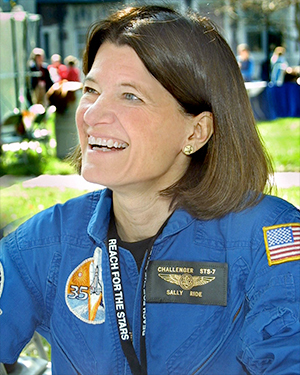
Sally Ride, the first American woman in space, was a champion for science and technology education (Sally Ride Science).
The S.S. Sally Ride is only the fourth Cygnus to be named for a woman. Northrop Grumman has a tradition of naming each of its spacecraft after someone who has made great contributions to human spaceflight. Past namesakes have included former company executive J.R. Thompson, U.S. Air Force Manned Orbiting Laboratory candidate Robert Lawrence, NASA mathematician Katherine Johnsonand NASA astronauts David Low, Gordon Fullerton, Janice Voss, Deke Slayton, Rick Husband, Alan Poindexter, John Glenn, Gene Cernan, John Young, Roger Chaffee, Alan Bean, Kalpana Chawla and Ellison Onizuka.
The most recent Cygnus, which was launched in February and deorbited in June, was named the S.S. Piers Sellers after a British-American climate scientist who launched on three missions to the space station.
Quelle: CS
+++
Watch: Northrop Grumman Names Next Cygnus Mission After Space Pioneer Sally Ride
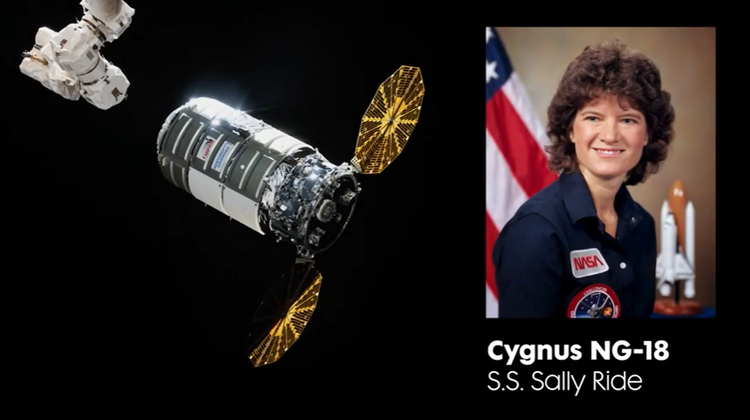
Northrop Grumman Corporation (NYSE: NOC) has named the next Cygnus mission to the International Space Station in honor of Dr. Sally Ride, astronaut, physicist, and first American woman to fly in space. The NG-18 mission is scheduled to launch on November 6.
The “S.S. Sally Ride” follows the company’s tradition of naming Cygnus spacecraft for an individual who has pioneered human spaceflight. Ride became the first American female astronaut serving on the crew of the second flight of Challenger and was a steadfast advocate for diversity and equality in science — inspiring countless women to pursue STEM careers.
Northrop Grumman uses Cygnus to perform International Space Station resupply flights under the second Commercial Resupply Services (CRS) contract. The Cygnus vehicle provides a number of advanced capabilities during these cargo resupply missions, including acting as laboratory space while docked to the station and reboost services – a critical part of altitude maintenance for the station.
Northrop Grumman is a technology company, focused on global security and human discovery. Our pioneering solutions equip our customers with capabilities they need to connect, advance and protect the U.S. and its allies. Driven by a shared purpose to solve our customers’ toughest problems, our 90,000 employees define possible every day.
Quelle:Northrop Grumman
----
Update: 24.10.2022
.
NASA to Discuss Science on Next Northrop Grumman Space Station Mission
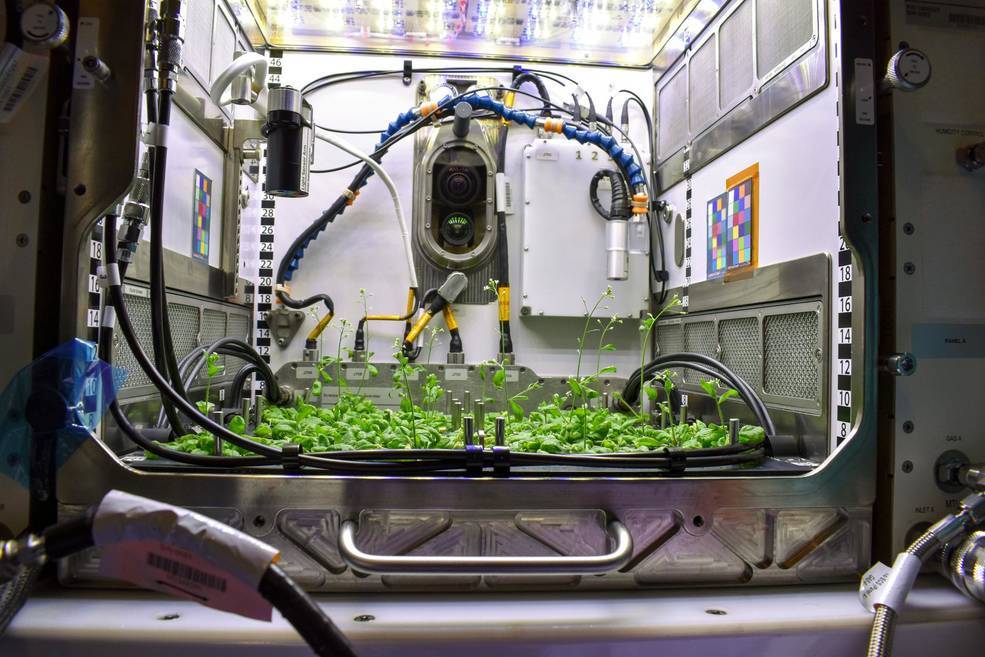
NASA will host a media teleconference at 11 a.m. EDT on Tuesday, Oct. 25, to discuss the next science investigations, technology demonstrations, crew supplies, and hardware bound for the International Space Station aboard Northrop Grumman’s Cygnus spacecraft on the company’s 18th commercial resupply mission for NASA.
NASA and Northrop Grumman are targeting launch no earlier than 5:50 a.m. EST on Sunday, Nov. 6. The Cygnus spacecraft, carried atop an Antares rocket, will launch from the Mid-Atlantic Regional Spaceport at NASA’s Wallops Flight Facility on Wallops Island, Virginia. The mission will carry scientific research, crew supplies, and hardware to the space station to support its Expedition 68 crew.
To participate in the call, media must RSVP at least two hours prior to the start of the event to Kiana Raines at 202-358-1100 or kiana.a.raines@nasa.gov. The public can submit questions on social media using #AskNASA.
Heidi Parris, associate program scientist for the International Space Station Program at NASA’s Johnson Space Center in Houston, will provide an overview of the research and technology launching aboard the Cygnus spacecraft.
Other teleconference participants include:
- Dr. William Olbricht, acting deputy division director for the Chemical, Bioengineering, Environmental and Transport Systems Division, National Science Foundation, will provide an overview of the foundation’s sponsored payloads on the mission.
- Dr. Ingrid Tomac, professor at the University of California, San Diego, and principal investigator for the Catastrophic Post-Wildfire Mudflows experiment, will discuss using this investigation to evaluate the roles of gravity and composition in mudflow formation.
- Dr. Anna-Lisa Paul, research professor at the University of Florida, Gainesville, and principal investigator for Plant Habitat-03, will discuss this experiment to assess whether adaptations in one generation of plants grown in space can transfer to the next generation.
- Dr. Andrea Fuso, associate professor at the Sapienza University of Rome and co-principal investigator for OVOSPACE, will discuss this investigation to examine the effect of microgravity on bovine cell cultures. This research could improve fertility treatments on Earth and help prepare for future human settlement in space.
- Rich Boling, vice president of corporate advancement for In-Space Manufacturing and Operations at Redwire Space, discuss the BioFabrication Facility with new capabilities to further human tissue printing research.
- Timothy Kudzanayi Kuhamba, senior systems engineer for the Zimbabwe National Geospatial and Space Agency (ZINGSA), will discuss the BIRDS-5 Project, a constellation of CubeSats, including the first satellites developed by Uganda and Zimbabwe. Bonny Omara, senior engineer for science, technology and innovation, Office of the President, also will be available to speak to the Ugandan satellite.
Cargo resupply from U.S. companies ensures a national capability to deliver critical science research to the space station, significantly increasing the ability of NASA to conduct new investigations at the orbital outpost. Other U.S. government agencies, private industry, and academic and research institutions can also conduct microgravity research through our partnership with the ISS National Laboratory.
Now in its third decade of operation, the microgravity laboratory advances scientific knowledge in Earth, space, physical, and biological sciences. Such research benefits people on Earth and lays the groundwork for future human exploration through the agency’s Artemis missions, which will send astronauts to the Moon to prepare for Mars.
Quelle: NASA
----
Update: 30.10.2022
.
NASA Sets TV Coverage for Cargo Launch to International Space Station
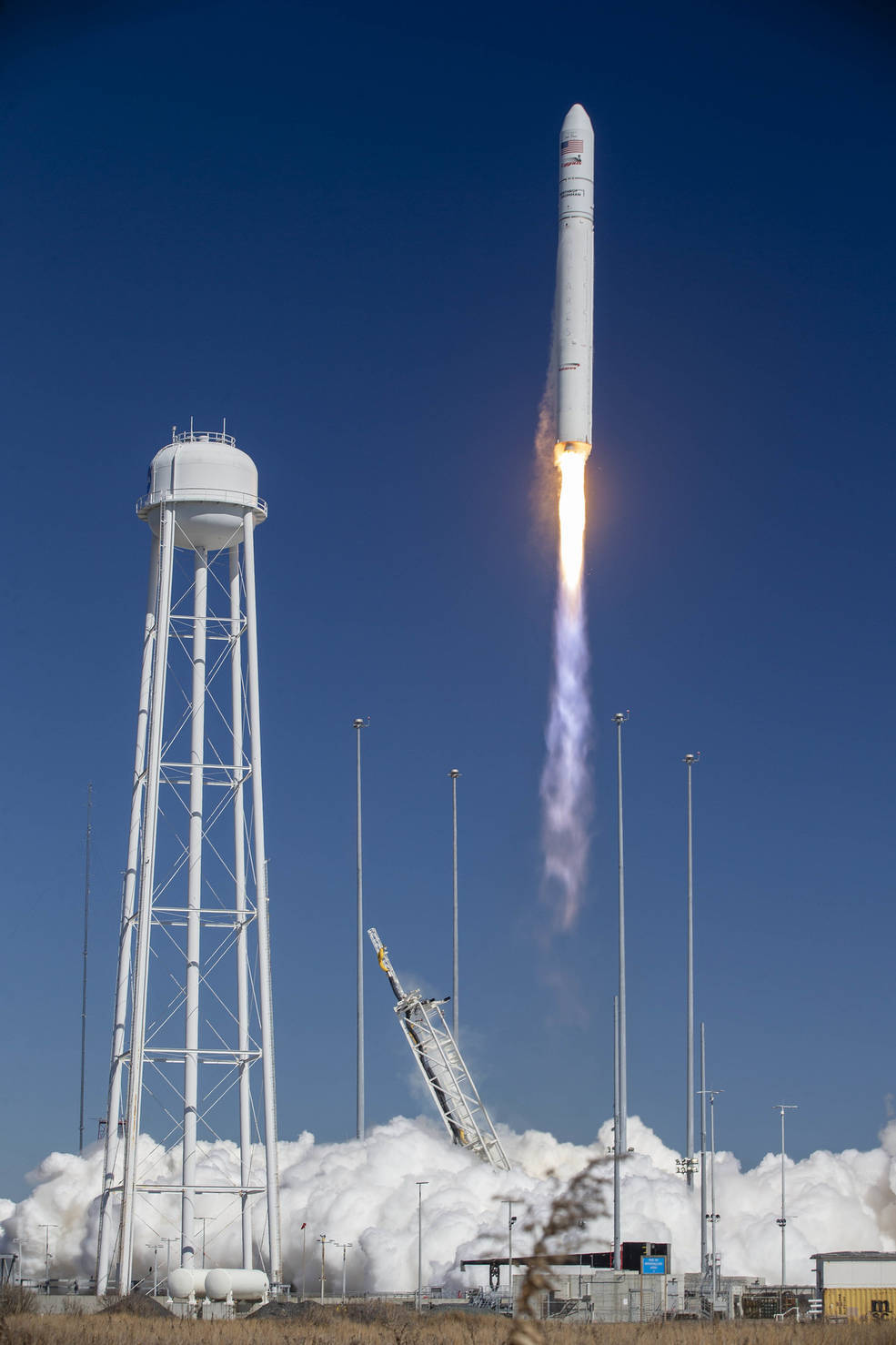
NASA and commercial cargo provider Northrop Grumman are targeting 5:50 a.m. EST, Sunday, Nov. 6, for launch of the company’s 18th resupply mission to the International Space Station.
Live coverage of the launch from NASA’s Wallops Flight Facility in Wallops Island, Virginia, will air on NASA Television. Watch live beginning at 5:30 a.m. on the agency’s website at:
Loaded with approximately 8,200 pounds of research, crew supplies, and hardware, Northrop Grumman’s Cygnus cargo spacecraft will launch on the company’s Antares rocket from Virginia Space’s Mid-Atlantic Regional Spaceport. It will arrive at the space station on Tuesday, Nov. 8.
NASA TV coverage of rendezvous and capture will begin at 4:30 a.m. EST followed by installation coverage at 7:30 a.m. At about 5:50 a.m., Expedition 68 NASA astronaut Nicole Mann will capture Cygnus, with NASA astronaut Josh Cassada acting as backup. After Cygnus capture, ground commands will be sent from mission control at NASA’s Johnson Space Center in Houston for the station’s arm to rotate and install it on the station’s Unity module Earth-facing port.
Highlights of hardware and space station research facilitated by samples and equipment aboard this Cygnus are:
- a facility and study that attempt to advance the 3D biological printing of human tissue in space
- a study taking advantage of microgravity to better understand catastrophic mudflows that can occur after wildfires
- Uganda and Zimbabwe’s first satellites developed as a part of the BIRDS program, an interdisciplinary project for non-space faring countries
- an investigation into how microgravity influences ovary function
- an experiment that studies if changes space-grown plants undergo to adapt to microgravity can be transmitted through seeds to the next generation
- hardware to be installed outside the station in preparation for the installation of Roll-Out Solar Arrays
The Cygnus spacecraft is scheduled to remain at the space station until late January 2023 when it will depart, disposing of several tons of trash during a destructive re-entry into Earth’s atmosphere.
This Cygnus is dubbed the S.S. Sally Ride in honor of late NASA astronaut, physicist, and first American woman to fly in space, Sally Ride. Ride spent 14 days across two space shuttle missions performing science experiments, making observations of Earth, deploying satellites, and conducting technology demonstrations. She was an advocate for diversity and representation in science and dedicated much of her life to inspiring young people, particularly young women, to pursue careers in science, technology, engineering, and math fields.
Prelaunch Briefing
A prelaunch briefing will be held at 1 p.m. EDT, Saturday, Nov. 5, and may be viewed on NASA Television and the agency’s website. Participants will include:
- Joel Montalbano, manager, International Space Station Program, NASA
- Heidi Parris, associate program scientist for the International Space Station
- Steve Krein, vice president, Civil and Commercial Space, Northrop Grumman
- Kurt Eberly, director, Space Launch Programs, Northrop Grumman
- Roosevelt "Ted" Mercer, Jr., CEO and executive director, Virginia Commercial Space Flight Authority
- Jeff Reddish, range chief, NASA’s Wallops Flight Facility
Accredited media may attend the briefing in-person at the NASA Wallops Visitor Center. Media who wish to participate by phone must contact Kiana Raines at kiana.a.raines@nasa.gov by noon on Friday, Nov. 4, for dial-in information.
Additionally, media and the public can submit questions on social media using #AskNASA.
NASA TV Coverage
Sunday, November 6:
- 5:30 a.m. – Launch coverage begins
- 5:50 a.m. – Launch window opens
Tuesday, November 8:
- 4:30 a.m. – Rendezvous coverage begins
- 5:50 a.m. – Capture of Cygnus with the space station’s robotic arm
- 7:30 a.m. – Cygnus installation operations coverage
Public Participation
Members of the public can also participate in the journey through a variety of activities including registering to attend this launch virtually. NASA’s virtual guest program for this mission also includes curated launch resources, notifications about related opportunities or changes, and a stamp for the NASA virtual guest passport following a successful launch.
Quelle: NASA
----
Update: 7.11.2022
.

